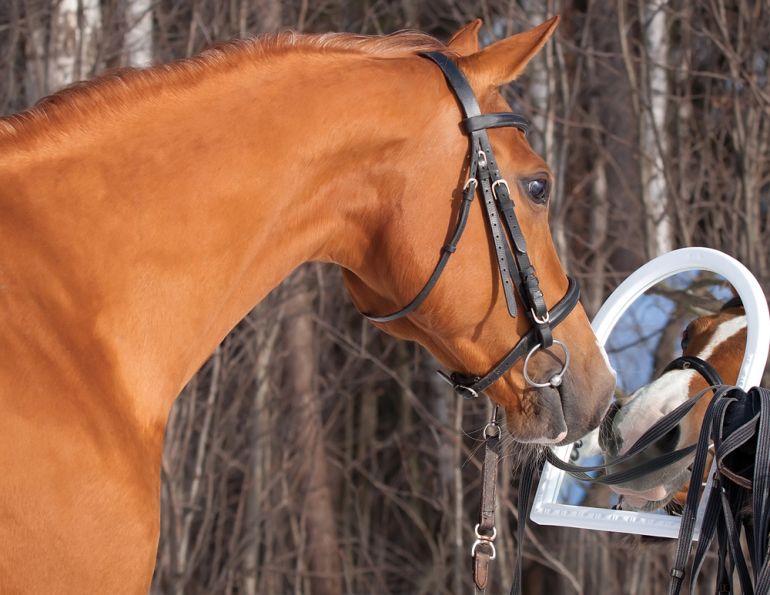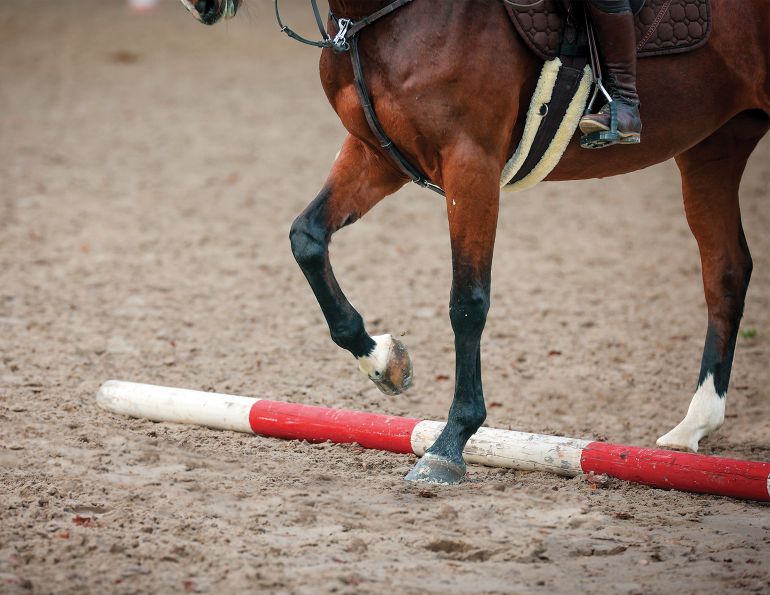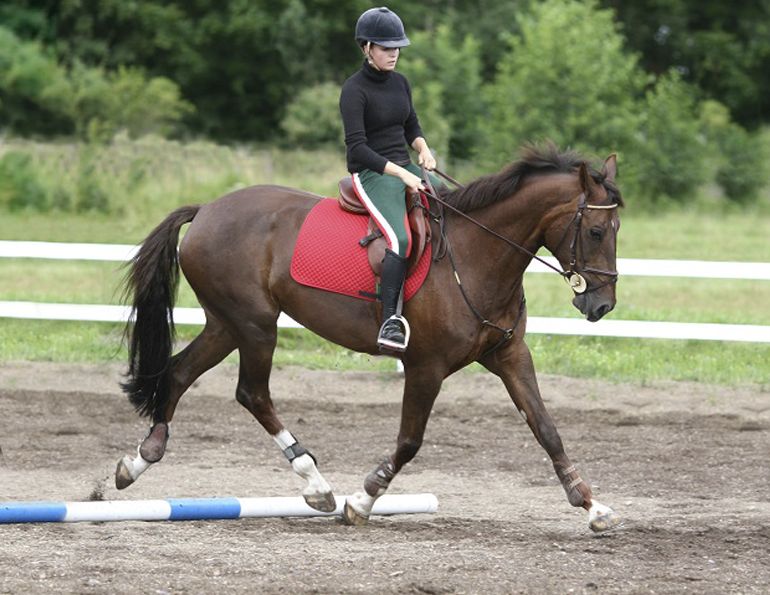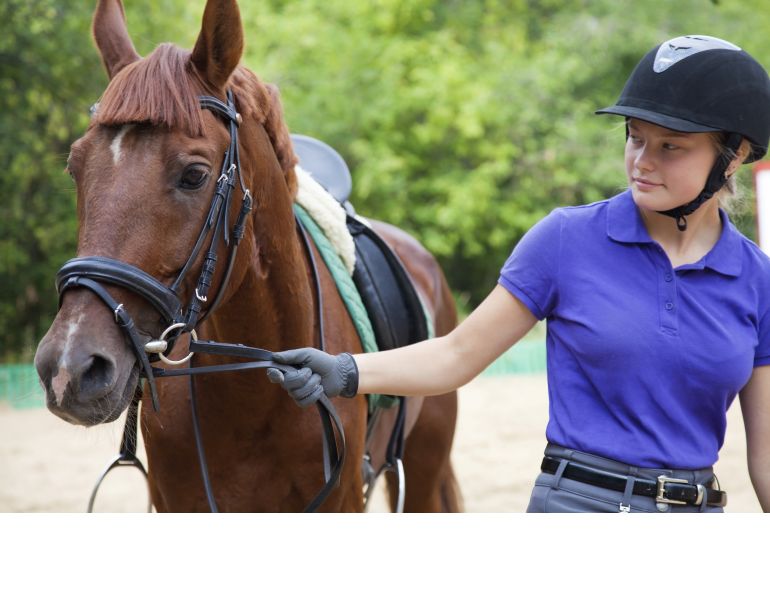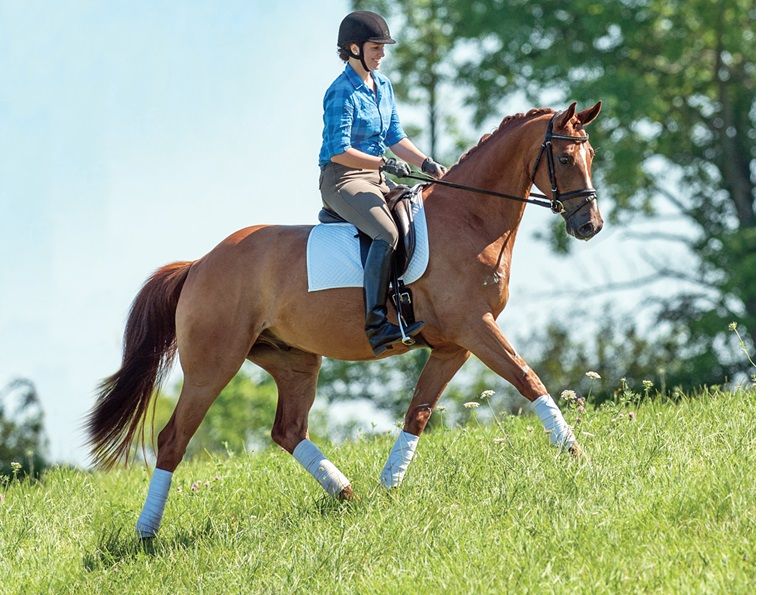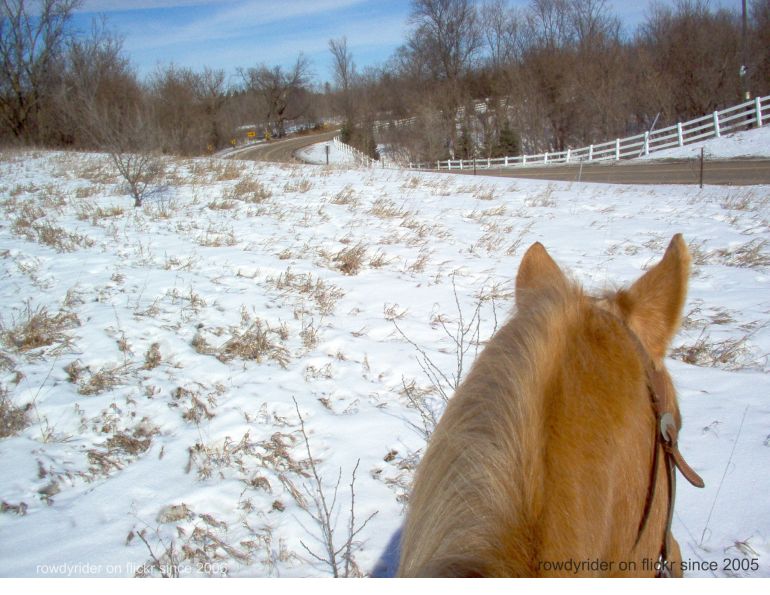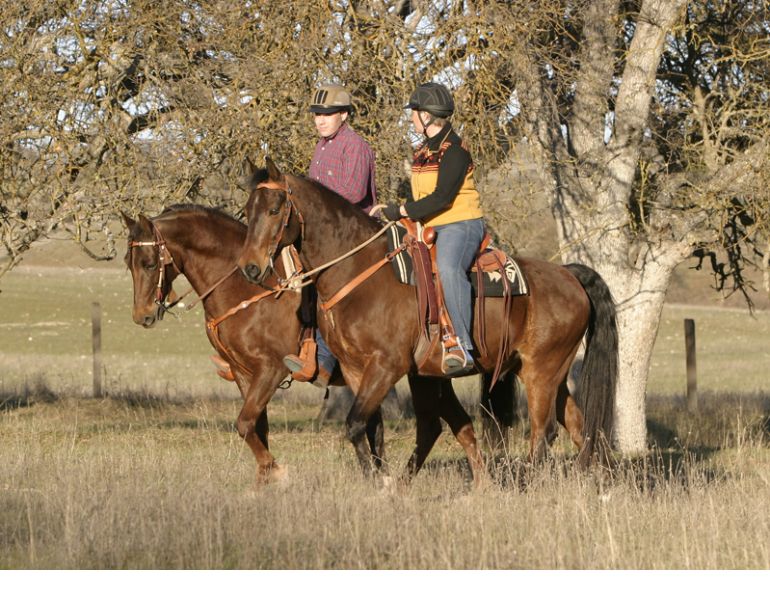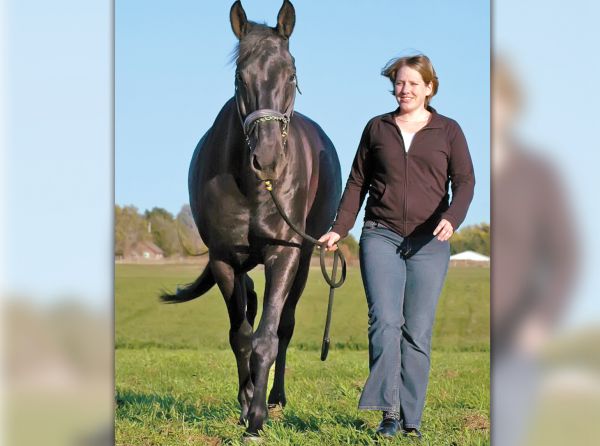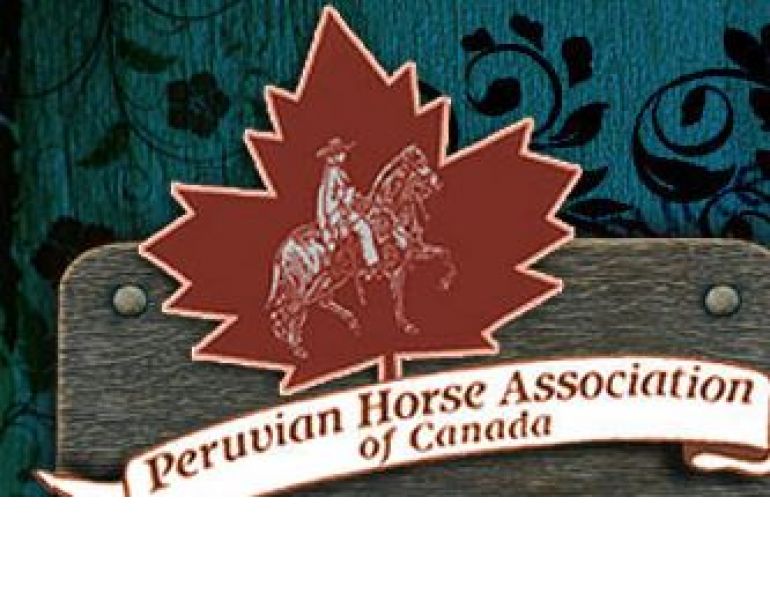This article originally published in 2012. Some of its references may be outdated.
By Stan Walchuk, Jr.
Several years ago Dave Bergen, an 80-year-old friend, came to visit. Dave was a horseman of the first order, a Saskatchewan ranchman who had spent more time on horseback than in his pickup truck. Like many old timers, Dave had spent little time inside of a round pen but that did not prevent him from creating well trained horses. I had contact with a few horses that he had raised and each and every one was respectful, friendly, and calm.
It was early spring, the snow was melting fast, and we were restless and eager to do something worthwhile. “You got a horse we can drive?” Dave said. “It’s a good thing to do. Makes ‘em a better horse every time.”
We hooked up a young Belgian cross mare and Dave gave me lessons. It did not take long see the benefits that came from driving the trail horse. That day started a habit that continues to this day; we ground drive all of our horses, once for some and once in a while for others. I am eternally grateful to Dave for this habit. Good habits are hard to come by. Good habits help us take bites from the good apple of life, whereas bad habits just up and bite us. Driving your saddle horse is fun, easy to do, and useful. And like Dave says, it makes ’em a better horse every time.
Before we study how to drive the trail horse and the benefits it offers for trail riding, be very clear that driving is not the first lesson you give a horse. Driving a horse that has not been properly desensitized with saddles, lines, and ropes; placing a bit on a horse that has not learned to respond softly to a bit; or giving cues to a horse that does not yet understand the meaning of those cues, is a short trip to mayhem. You must be sure that it is a learning experience, not an experience in confusion, fear, and flight.
So do your groundwork in a round pen or with a lunge line first. Before driving, your horse should willingly step out with a cluck and stop with a “whoa” command. He needs to wear a saddle calmly and accept ropes around his legs, between his back legs, and into the groin area. The horse must be calm with the trainer moving in and out of his space.
Why Drive?
If you are thinking, “who needs drive training if the horse is that well trained already,” remember that behaviour on the trail is rarely as controlled as it is in a pen. The essence of trail riding is freedom; long distance travel, variable terrain, and variable conditions give the horse more freedom of movement, more freedom of mind, and a greater desire to take control of his own actions. As trail riders we need to use our dominance, our training, and our persistence to remind the horse that we are in control. This is where driving the trail horse helps us.
In past articles I have mentioned the importance of having the trail horse stand still as you mount. We need to have a good look at why this is critical in a trail horse. Once upon a time, while reading an old book on horse training, I came to a section that was titled “Mounting the Moving Horse.” I did not know whether to laugh or cry. The idea of being satisfied with or accepting a trail horse that moves as you mount up or after you mount up is foolish; an experienced trail rider would be unlikely to tolerate such behaviour. A moving horse makes mounting difficult; makes you more likely to lose the reins or control of the horse as you mount; makes it difficult to get off and retrieve something you have dropped on the trail; makes it more likely that your horse will take off on you when dismounting; agitates other horses around you; makes the horse more likely to dance after you mount and when you want to perform some chore like eating a snack, studying a trail, looking at a map, etc.; makes it likely you will get caught up in the lead rope if you are leading a horse; makes it likely you will get the lead rope of the horse you are leading caught under your saddle horse’s tail, which can send your horse into fits; and the list goes on.
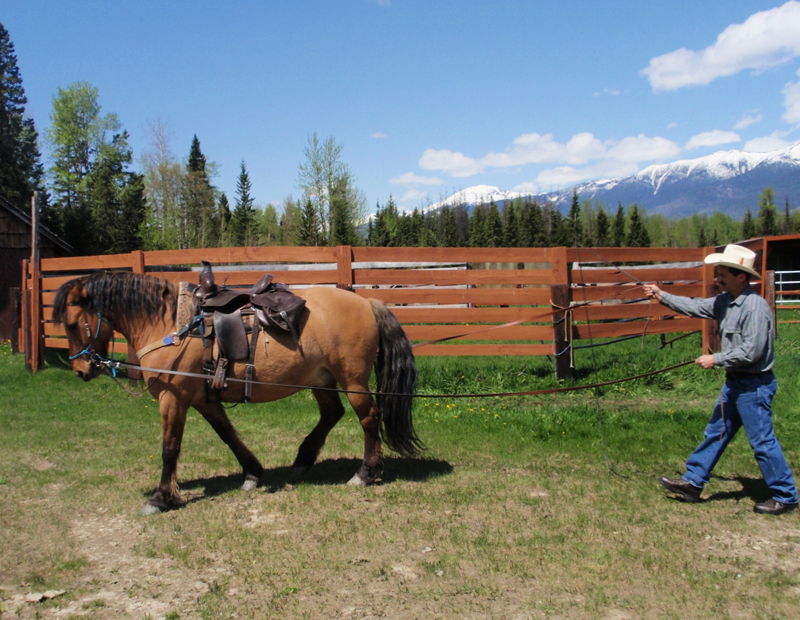
At first simply let the horse walk out. The horse needs to feel that forward movement is a good thing. Once you and the horse are comfortable, you can ask the horse to turn by bumping the horse with one rein and relaxing the other.
Drive training helps desensitize the horse to lines and ropes around his feet. Horses get used to the feel of lines and this helps them accept trail situations where ropes come into contact with their feet, including a loose lash rope on a pack horse, picket lines for feeding, and dropped lead ropes. Completely respecting the rope and stopping when the drive lines are dropped will also help the horse stand calmly if he ever finds himself caught up in fence wire.
Trail riders often have difficulty with their horses respecting the “whoa” command. If a horse hears it too often or pushes the borders often, ignoring the command will soon become an option and the rider will find himself saying “whoa” five times over while hauling back on the reins again and again. As riders we often need to remind ourselves not to use the word “whoa” unless we absolutely know that we are going to stop; if we want to slow down, we say “easy.” Drive training reminds the horse that “whoa” is absolute and means “right now.” Drive training also reinforces the concept that a cluck or “walk on” means to step out immediately. It is also a good time to practice the command “back.”
If the horse does not respond to “whoa,” give it a crisp bump to stop. After doing so a few times, this horse stopped promptly with the voice command only.
The moment there is some distance between themselves and the rider, some horses seem to think that they have the freedom to choose to obey commands or not, and often they choose not to obey. With driving you are separated from the horse so when you give a command, “whoa” for example, and the horse continues to walk, it is a big shock when you bump the reins and stop the horse abruptly. The simple fact that you command and control the horse from a distance elevates your status in the horse’s mind. This distance concept allows you to train the horse to ground tie, meaning that you establish absolute stops where you can drop the reins and walk about with the horse standing still waiting for your return. Being ground tied is a tremendous asset on the trail when you leave the horse temporarily to relieve yourself, check trails, clear trails, or perform a variety of tasks.
Ground Driving
Your first drive is best attempted in a good size pen, preferably round but square will do. You can try driving for the first time out in the open but if you lose control you may have a runaway. Saddle and bridle your horse. Use a snaffle bit that the horse is already comfortable with, not a shanked bit. Attach a set of light lines that are long enough so you can avoid being kicked, 15 to 20 feet works well. Thread the lines through the stirrups and out the back. Threading them through the stirrups keeps them off the ground and helps prevent the horse from stepping on them. If your horse does not stand well for these procedures and does not stand calmly as you walk in and out of his space then you need to go back to basic groundwork to get to that point before continuing.
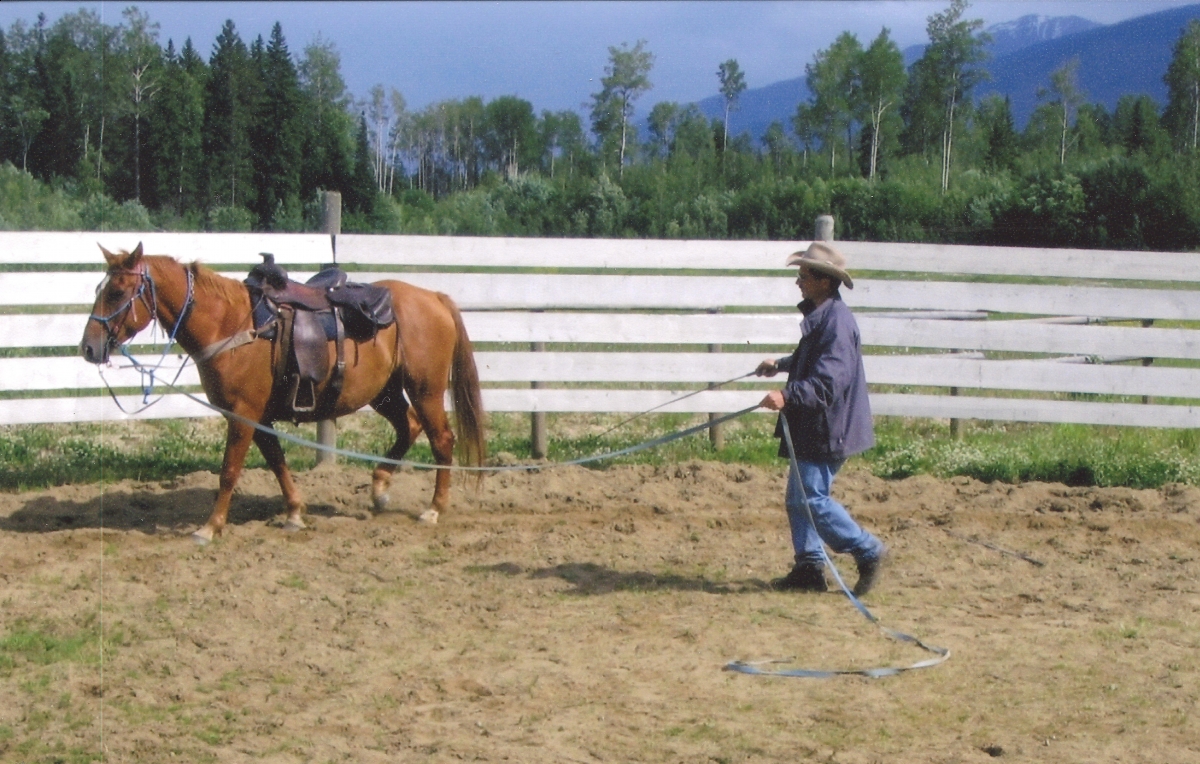
Groundwork needs to be complete before driving the trail horse. Begin driving the horse in the same position as lunging, just behind and to the inside of the horse, as shown in this photo.
Take up a position to the rear and slightly to the inside of the horse, similar to where you might begin to lunge. Because your horse has had round pen or lunging experience he will move forward when you cluck from this position. Cluck or say “walk on,” snap your wrists, and snake the reins, which should move the horse immediately. If the horse does not step out with the first command then you need to use a training whip and touch the horse when you give the command.
Do not give second commands. The horse must move with the first command. Give the command, and, if there is no response, a light tap; if there is still no response, then give a slightly harder tap.

The author’s family gets ready to head out on a buggy ride using a saddle horse. Before you attempt to pull objects like logs or buggies, you need to train the horse for harness, which is more involved than ground driving the saddle horse.
When the horse steps out, move forward with him, staying slightly to the inside of the circle that you are turning. Do not ask for too much to begin with, just let him move out and follow behind with some slack in the reins. If the horse trots or runs out in a hurry, just let him go as if you were lunging him and when he stops, pick up the lines and begin again. It is a bit of an art to get the feel of the lines and to keep them from tangling, but it gets better with practice.
Once the horse has moved out without a great amount of fear and you are following behind, you can bump him back to check his forward movement and slow him down. Do not pull back with steady pressure; use pulses only and be more aggressive until he responds and slows down. Because the horse responds to “whoa,” you can give the verbal command and bump him back to a stop. When he stops, let him rest a minute so that he understands that it was the right thing to do. If he stands well then give him gentle rub as a reward before you continue.
It should not take long before the horse stops and starts efficiently and you are able to leave the horse standing for longer periods of time before continuing (ground tied). Once the horse accepts the procedure, you can pulse on the inside rein and expect the horse to turn smaller circles to the inside. Remember, no steady, hard pulling, just pulses and bumps. Work the horse in both directions so he will be accustomed to bit pressure on each side.
You will likely find the horse more responsive on one side than the other, but this is normal. It may take the horse more practice to turn with soft pulses on his stiff side. Soon you will be able to drive straight and ask for turns in either direction.
It is very important not to ask for too much until both you and your horse get comfortable with the procedure. At first you will find it a challenge to keep even reins and an even, light pressure as you walk along, and you will find it a challenge to ease the pressure on one rein as you apply pressure and ask for a turn on the other rein. It will confuse the horse if you apply the pulse pressure on one side but do not release pressure on the other. The goal with all cues is to apply less pressure and get a better, instant response. As you continue to practice, you should be able to apply a lighter pulse and get the desired response. After a few sessions your horse will stand better, stand longer, and have more respect for your control — precious stuff for the trail!
This article originally published in 2012. Some of its references may be outdated.
All photos courtesy of Stan Walchuk, Jr.







